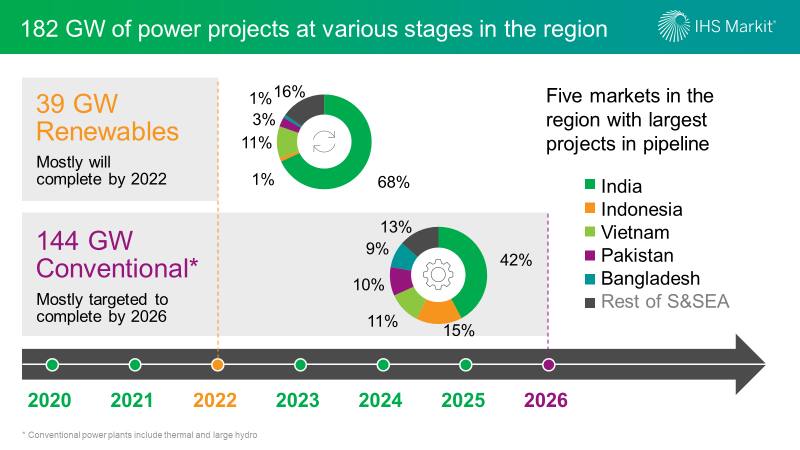Ten big questions on South and Southeast Asia’s power markets in 2020
At the beginning of 2020, the South and Southeast Asian power teams look across the power markets and highlight the most pertinent power issues in the region. These markets continue to represent dynamic power demand growth, and will need to increase capacity, some on a national level and others at a regional level to avoid power shortages. A total of 182 GW of power projects at various stages are in the pipeline, of which 39 GW of renewables will be completed by 2022 and 144 GW of conventional power projects are targeted by 2026.
 Figure 1: 182 GW of power
projects at various stages in the region
Figure 1: 182 GW of power
projects at various stages in the region
The energy policy in South Asia continues to be driven by sustainability, affordability, and energy security concerns. Despite environmental concerns and ambitious renewable targets, coal-fired power will continue to dominate in power generation fuel mix. Renewables would demonstrate strong growth in the region, mainly driven by policy support, falling costs, and climate concerns.
Market reform in the Southeast Asian region appears stagnant, and there is no indication major progress will be made in 2020. However, reforms in South Asia, particularly in the distribution sector, are expected to move ahead in 2020. Despite that, structural challenges will take longer to be addressed.
The 10 questions will range from power market reform, demand, and generation fuel mix to transmission network.
Download the complete report, IHS Markit Insight "Ten big questions on South and Southeast Asia's power markets in 2020."
Ankita Chauhan is a Senior Renewable Analyst for the
Gas, Power and Energy Futures team at IHS Markit.
Cecillia Zheng is an Associate Director at IHS
Markit.
Posted 01 April 2020.
This article was published by S&P Global Commodity Insights and not by S&P Global Ratings, which is a separately managed division of S&P Global.


